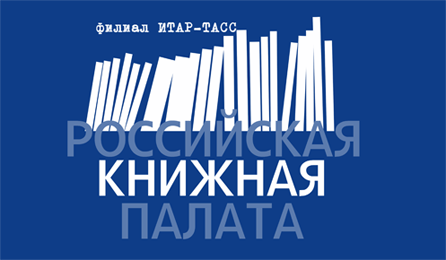Balabeykina O. A. The phenomenon of new rural settlements on the example of the Republic of Udmurtia // The Russian Peasant Studies. 2024. V.9. №1. P. 96-106.
DOI: 10.22394/2500-1809-2024-9-1-96-106
Annotation
The article aims at presenting a list of new rural settlements in the Republic of Udmurtia, which were founded in the first two decades of the 21st century, and at identifying the features of their social-economic functioning and economic significance. The article is based on the results of the author’s official requests about the liquidation and emergence of new settlements, which were made in November 2023 to the authorities and administration of the Republic of Udmurtia; on the collected legal documents of regional importance, cartographic, scientific, and online sources. Thus, the author identifies quantitative and qualitative characteristics of restored villages in the Republic of Udmurtia, emphasizes the high interest in the liquidated rural settlements, presents a list of new villages which appeared on the site of the previously abolished ones, and describes the economic activity of villagers as predominantly agricultural and agrotourism. The available facts of the restoration of previously abolished villages in the Republic of Udmurtia show this restoration as an isolated phenomenon, but it should be evaluated positively in both economic and social terms.
Keywords
Village, creation of a settlement, Republic of Udmurtia, rural studies, rural area, abolished settlement.
About the author
Olga A. Balabeykina, PhD (Geography), Associate Professor, Department of Regional Economics and Environmental Management, Saint Petersburg State Economic University, Canala Griboedova Nab., 30–32, Letter A, Saint Petersburg, 191023.
E-mail: This email address is being protected from spambots. You need JavaScript enabled to view it.
The article was submitted on 14.12.2023.
Rural areas of Bashkiria: Prevailing types and features of transformation in the post-Soviet period
Feb 08 2023Alekseev A. I., Imangulov L. R. Rural areas of Bashkiria: Prevailing types and features of transformation in the post-Soviet period // The Russian Peasant Studies. 2022. V.7. №4. P. 109-132.
DOI: 10.22394/2500-1809-2022-7-4-109-132
Annotation
The article outlines the features of the development of rural areas in the Republic of Bashkortostan in the post-Soviet period, such as the high share of the rural population, developed agricultural sector, institutional support of the village, etc. Based on the statistical data and the results of the field research, the authors identify the dominant types of rural areas in the Republic of Bashkortostan by municipal districts with the predominantly rural population. The key features of the typology are as follows: natural conditions, district’s position in the system ‘center-periphery’, characteristics of population, level of the development of agriculture and public utilities. The results of the cluster analysis and data systematization allowed to identify the following social-economic types of rural areas in the region: suburban rural area, agrarian Bashkiria, and traditional Bashkir rural area. For each type and subtype of rural areas the authors conducted a detailed social-economic analysis and described the trajectories of the rural transformation in the post-Soviet period. Today, the role of the agricultural sector in the life of the rural population is decreasing. In the final section, the authors assess the role of agricultural production in the life of the rural population by types of rural areas. Thus, in agrarian Bashkiria, work on the land still remains the main labor practice (employment in agricultural organizations, personal subsidiary farms), but the life of the significant part of population is poorly connected with the agrarian sector.
Keywords
Rural area, rural settlement, agriculture, factors of rural transformation, typology of rural areas, Bashkortostan.
About the authors
Alekseev Alexander I., DSc (Geography), Professor, Department of Economic and Social Geography of Russia, Faculty of Geography, Lomonosov Moscow State University. 119991, Moscow, Leninskie Gory, 1.
E-mail: This email address is being protected from spambots. You need JavaScript enabled to view it.
Imangulov Linar R., Master’s student, Department of Economic and Social Geography of Russia, Lomonosov Moscow State University. 119991, Moscow, Leninskie Gory, 1.
E-mail: This email address is being protected from spambots. You need JavaScript enabled to view it.
Prusikhin O. E., Zhukovsky E. D., Krutov O. D., Alekseev A. I. Life of Ivan and Hans in the 21st century: Volchikhinsky district of the Altai Region // The Russian Peasant Studies. 2022. V.7. №3. P. 190-209.
DOI: 10.22394/2500-1809-2022-7-3-190-209
Annotation
The article describes the lifestyle of rural residents in the steppe part of Southern Siberia on the example of the Volchikhinsky district of the Altai Region. The approach applied is inspired by the book by O. P. Semenova-Tyan-Shanskaya The Life of Ivan which presents a ‘portrait’ of the typical, ‘collective’ villager. The authors identify a number of characters reflecting the typical social groups of the village. Local population was formed mainly by the peasant migrations of the Stolypin era (Russians) and by the deportation of the Volga Germans during the Great Patriotic War; the number of Germans was also influenced by the wave of resettlement to Germany, which had begun after the collapse of the Soviet Union. The destruction of closed communities and their resettlement in the Russian settlements of Altai led to the rapprochement of these groups and to the blurring of the ethnic-cultural boundaries between them. The authors identify differences in the lifestyle of the district center and its villages. The main employers in Volchikha are the brewery and public sector; most residents do not keep livestock; thus, they have free time. For residents of other villages, personal subsidiary farming mainly based on a cow is the main source of livelihood, which almost deprives them of free time. However, the ways for spending free time are similar for all residents of the district. The weekly market in Volchikha serves as a place for both trade and social interactions for the entire district. The authors conclude that the contemporary differences in the lifestyle are determined by the level of urbanization and the age of the settlement rather than by ethnic differences.
Keywords
Rural area, lifestyle, Altai Region, Southern Siberia, peasant activities, Russian Germans.
About the authors
Prusikhin Oleg E., Bachelor’s Student, Department of Economic and Social Geography of Russia, Faculty of Geography, Lomonosov Moscow State University; Leninsky Gory, 1, Moscow, 119991, Russia.
E-mail: This email address is being protected from spambots. You need JavaScript enabled to view it.
Zhukovsky Evgeny D., Bachelor’s Student, Department of Economic and Social Geography of Russia, Faculty of Geography, Lomonosov Moscow State University; Leninsky Gory, 1, Moscow, 119991, Russia.
E-mail: This email address is being protected from spambots. You need JavaScript enabled to view it.
Krutov Oleg D., Bachelor’s Student, Department of Economic and Social Geography of Russia, Faculty of Geography, Lomonosov Moscow State University; Leninsky Gory, 1, Moscow, 119991, Russia.
E-mail: This email address is being protected from spambots. You need JavaScript enabled to view it.
Alekseev Alexander I., DSc (Geography), Professor, Department of Economic and Social Geography of Russia, Faculty of Geography, Lomonosov Moscow State University; Leninsky Gory, 1, Moscow, 119991, Russia.
E-mail: This email address is being protected from spambots. You need JavaScript enabled to view it.
Tkachenko A.A., Smirnova A.A., Smirnov I.P. A geographical classification of rural areas in the Tver Region // The Russian Peasant Studies. 2021. V.6. №3. P. 6-18.
DOI: 10.22394/2500-1809-2021-6-3-6-18
Annotation
The authors consider the term ‘rural areas’ and believe that such territories should not be defined as administrative-territorial units. The article presents another interpretation of ‘rural areas’ on the example of classification developed for the Tver Region. This classification is based on three features: the type of territory, its functions, and the development of rural settlements network; recreational potential can be an additional criterion. The combination of these features allowed the authors to identify 11 types of rural areas and to describe the distribution of territories and rural population of the Tver Region by typological groups.
Keywords
Rural area, rural district, classification, type, function, rural settlement, recreational potential.
About the authors
Tkachenko Alexander A., DSc (Geography), Professor, Faculty of Geography and Geoecology, Tver State University. 170021 Tver, P. Proshina St., 3, bldg. 2.
E-mail: This email address is being protected from spambots. You need JavaScript enabled to view it.
Smirnova Alexandra A., PhD (Geography), Associate Professor, Faculty of Geography and Geoecology, Tver State University. 170021 Tver, P. Proshina St., 3, bldg. 2.
E-mail: This email address is being protected from spambots. You need JavaScript enabled to view it.
Smirnov Ilya P., PhD (Geography), Associate Professor, Faculty of Geography and Geoecology, Tver State University. 170021 Tver, P. Proshina St., 3, bldg. 2.
E-mail: This email address is being protected from spambots. You need JavaScript enabled to view it.
Gusakov T.Yu. Rural Crimea and its agroholdings // The Russian Peasant Studies. 2020. V.5. №2. P. 106-129.
DOI: 10.22394/2500-1809-2020-5-2-106-129
Annotation
The increase in number of agroholdings in the Russian regions changes the paths of rural development and attracts the scientific interest to interaction of business groups with the authorities and local communities. Concentration of agricultural production in the hands of large companies has regional peculiarities determined by the level of integration: there are regions with a high share of holdings in the structure of agricultural production (for example, the Belgorod and Voronezh Regions) and, on the contrary, regions with a high share of agricultural production in households (Dagestan, Crimea, Tuva). The article considers the Republic of Crimea as a participant of the emerging holding structure of the agricultural production, but the increase in the share of agricultural enterprises is accompanied by the dominance of the informal household economy. The author also considers the influence of agroholdings on the development of rural territories and agricultural production on the example of the largest Crimean producer of agricultural products.
Keywords
agriculture, rural area, agroholding, rural development, integrated business group, Republic of Crimea
About the author
Gusakov Timur Yu., Junior Researcher, Center for Agrarian Studies, Russian Presidential Academy of National Economy and Public Administration. Vernadskogo Prosp., 82, Moscow, 119571.
E-mail: This email address is being protected from spambots. You need JavaScript enabled to view it.
Averkieva K.V. Symbiosis of agriculture and forestry on the early-developed periphery of the Non-Black Earth Region: The case of the Tarnogsky district of the Vologda Region // The Russian Peasant Studies. 2017. V.2. №4. P. 86-106.
DOI: 10.22394/2500-1809-2017-2-4-86-106
Annotation
The article considers the social-economic structure of the Tarnogsky district of the Vologda Region, which has a peripheral position in both European Russia and the region. Its specific features such as the low rate of population decline and the growth of the local economy that is not high compared to other Non-Black Earth regions do not correspond to the centre-periphery logic of the well-developed space adopted in social and economic sciences. There is a highly developed timber industry including manufacture of a wide range of complex products; eleven agricultural enterprises and creamery that increase production annually, which is a rarity in the peripheral Non-Black Earth region. Such success of the Tarnogsky district is determined by both reasonable regional policies in forestry and agriculture and by personal qualities of the residents, i.e. the social capital. The author argues that the long-term territorial isolation combined with a long history of economic development played an important role in the current situation. Perhaps, the development of stable and close social ties was influenced by the ‘cluster’ (or “nesting”) type of rural settlement, in which “bushes” of 10-15 villages are located in walking distance from each other and separated by forest areas.
Keywords
rural area, periphery, early-developed territory, agriculture, forestry, social capital
About the author
Averkieva Kseniya V., PhD (Geography), Senior Researcher, Institute of Geography, Russian Academy of Sciences, Moscow, 119017, Staromonetny Per., 29.
E-mail: This email address is being protected from spambots. You need JavaScript enabled to view it.





















